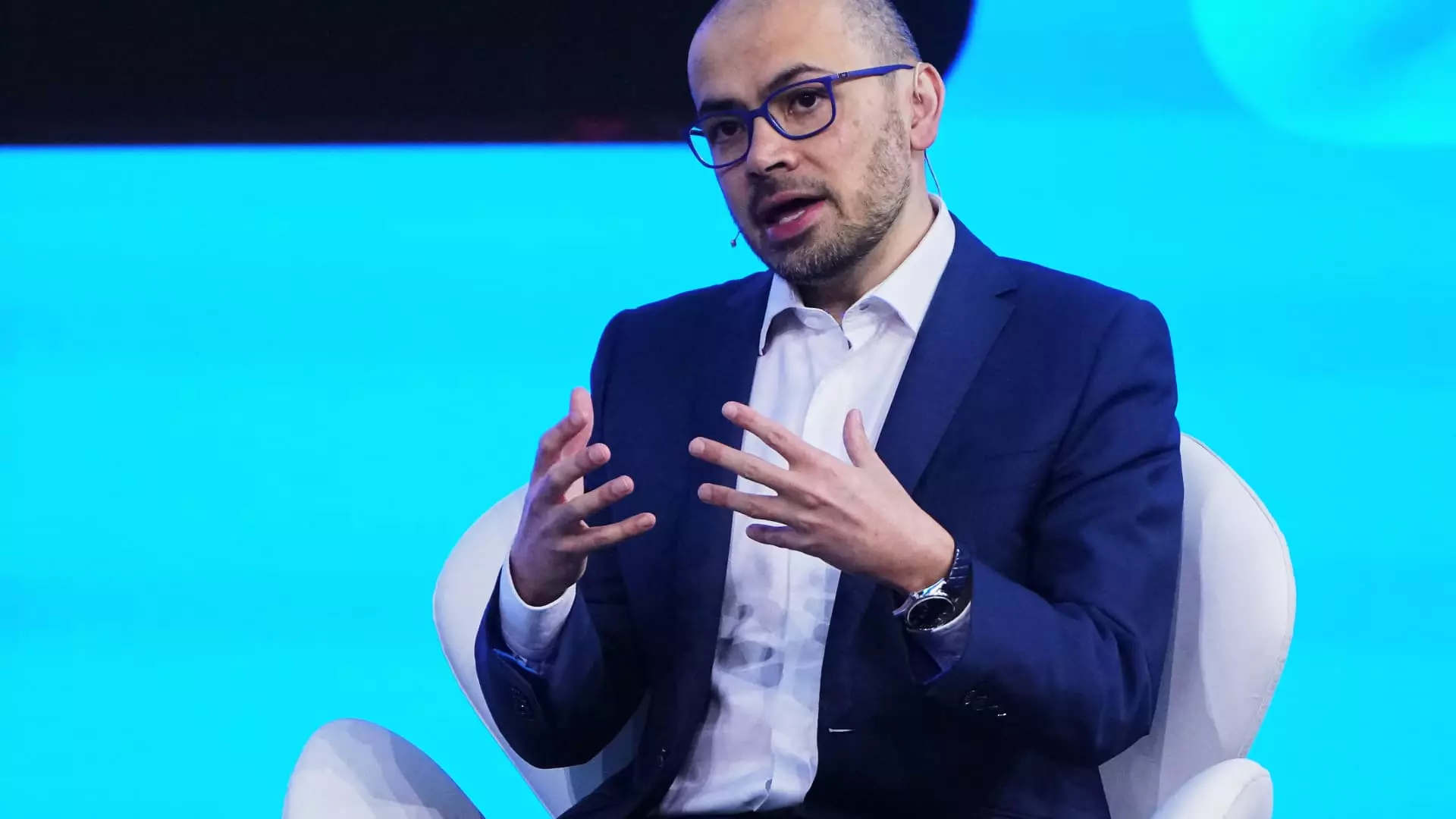The realm of artificial intelligence (AI) is a battleground of innovation and competitive prowess, especially among global tech giants. Recently, a research paper released by China’s AI company Deepseek has ignited both excitement and skepticism within the industry. Demis Hassabis, the CEO of Google DeepMind, expressed admiration for Deepseek’s achievements but was also quick to temper expectations regarding the claims made by the Chinese firm. This juxtaposition highlights a wider discourse on the current state and future of AI technologies around the world.
Deepseek’s entrance into the AI conversation has certainly made waves. The company claims its model has been trained at a significantly lower cost compared to its competitors and utilizes less sophisticated Nvidia chips. This assertion prompted a strong reaction from investors, leading to a notable stock sell-off among established tech players. Such events suggest that the landscape of AI investment is heavily influenced by emerging players like Deepseek, prompting questions about whether existing companies are overextending themselves in their quest for advanced infrastructure.
While Hassabis praised Deepseek’s engineering capabilities, he pointed out that the model did not introduce any novel scientific advancements to the field. His assertion that “there’s no actual new scientific advance” serves as a reminder that innovation in AI often comes not only from new models but also from the ability to execute existing technologies more effectively. This brings to light an ongoing tension within the industry: the distinction between genuine breakthroughs and improvements upon previous knowledge.
Amidst this dialogue on specific advancements, broader conversations about artificial general intelligence (AGI) are taking center stage. AGI represents a level of AI that surpasses human cognitive capabilities, and experts like Hassabis believe that we may be closer to realizing this ambition than ever before. He posits that society might only be about five years away from encountering such sophisticated systems.
However, as the potential for AGI grows, so too do the concerns surrounding it. Prominent figures in AI have expressed apprehension that humans could eventually lose control over powerful systems they designed. This sentiment underscores a critical dialogue about balancing innovation with ethical considerations and safety protocols. It is essential that as we advance towards developing AGI, we also consider the societal impacts and risks involved.
The competitive landscape of AI development is as much about the technology as it is about perception and performance. Hassabis highlighted Google’s Gemini 2.0 Flash models as being more efficient than Deepseek’s offerings. This point raises questions about the metrics used to assess AI capabilities and whether cost, efficiency, or performance are prioritized differently by various firms. The debate concerning Deepseek’s claims is indicative of the scrutiny that comes with major advancements in AI, prompting industry experts to rigorously analyze and validate the results.
Moreover, the dialogue surrounding AI spending among large tech firms reflects a deeper paradigm shift in the industry’s focus. If emerging players can offer competitive models at reduced costs, what does this mean for the operational strategies of established tech companies? Investors are increasingly aware of this dynamic, sending ripples through stock markets as they recalibrate their expectations for the future.
As we stand on the brink of potential breakthroughs in AI, the urgency for responsible development cannot be overstated. Both Hassabis’s insights and the concerns voiced by fellow scientists reinforce the necessity for a balanced approach to innovation. Society must not only embrace the benefits that sophisticated AI can offer, particularly in driving forward AGI, but also remain vigilant about the multifaceted risks associated with such power.
Moving forward, a collaborative effort that involves interdisciplinary contributions—from ethicists to technologists—will be crucial in shaping a future where AI enriches human life while ensuring that control remains firmly in our hands. The path of artificial intelligence is laden with possibilities and perils, demanding conscientious stewardship from all involved.


Leave a Reply